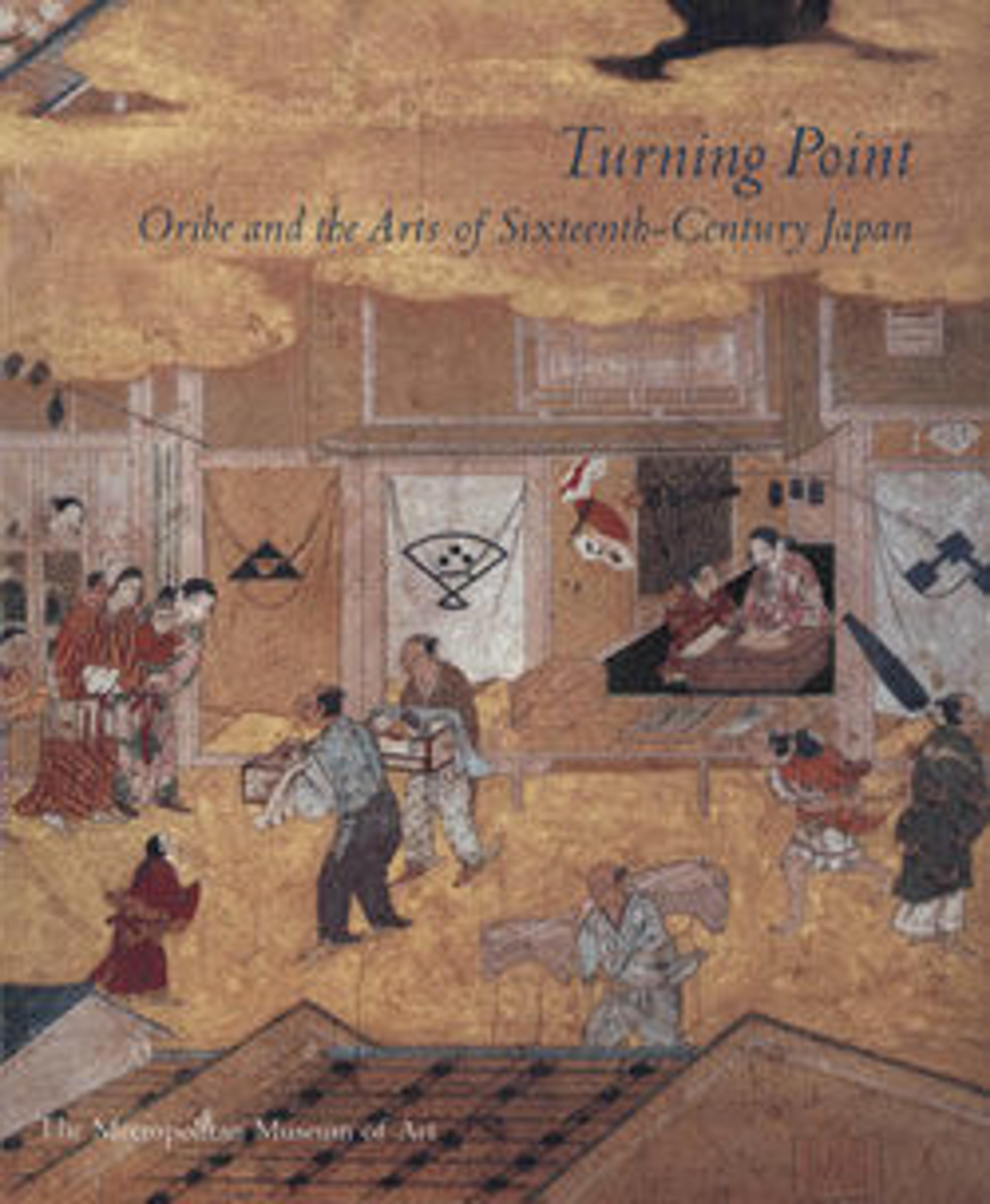Dish with Grasses
Sprays of autumn grasses are depicted on the square surface of this dish. The outer rim, decorated with bands of abstract patterns—short vertical bars around the corners and horizontal dashes at the sides—is like a frame for a painting. The piece was initially formed not by using a wheel, but by pressing a clay slab over a kind of mold. The sides of the dish were curved gently upward and its corners rounded and shaped with indentations. Four looped feet were attached to the base. The marks left by several spurs, used to stack vessels in the kiln, are visible on the bottom.
Decoration on the dish is in white against a gray background, a particular color combination in Shino ware known as Gray (nezumi, literally "mouse") Shino. To produce it, an iron-rich red clay slip was first applied onto the white clay body. The designs were scratched through the slip, and the entire piece was then covered with a thick, uneven feldspathic white overglaze. In the kiln, the glaze turned bubbly and porous, and, wherever there was slip beneath it, gray; in design areas where the slip had been scratched away, the overglaze remained white. Where the glaze was thin or accidentally not applied (mainly on the rim and the base), iron-oxide red accents emerged, an effect that is admired.
Decoration on the dish is in white against a gray background, a particular color combination in Shino ware known as Gray (nezumi, literally "mouse") Shino. To produce it, an iron-rich red clay slip was first applied onto the white clay body. The designs were scratched through the slip, and the entire piece was then covered with a thick, uneven feldspathic white overglaze. In the kiln, the glaze turned bubbly and porous, and, wherever there was slip beneath it, gray; in design areas where the slip had been scratched away, the overglaze remained white. Where the glaze was thin or accidentally not applied (mainly on the rim and the base), iron-oxide red accents emerged, an effect that is admired.
Artwork Details
- 鼠志野草花文額皿
- Title:Dish with Grasses
- Period:Momoyama period (1573–1615)
- Date:late 16th–early 17th century
- Culture:Japan
- Medium:Stoneware with design incised through iron-rich clay slip (Mino ware, gray Shino type)
- Dimensions:H. 2 3/8 in. (6 cm); W. 8 3/8 in. (21.3 cm); D. 7 1/4 in. (18.4 cm)
- Classification:Ceramics
- Credit Line:The Harry G. C. Packard Collection of Asian Art, Gift of Harry G. C. Packard, and Purchase, Fletcher, Rogers, Harris Brisbane Dick, and Louis V. Bell Funds, Joseph Pulitzer Bequest, and The Annenberg Fund Inc. Gift, 1975
- Object Number:1975.268.436
- Curatorial Department: Asian Art
More Artwork
Research Resources
The Met provides unparalleled resources for research and welcomes an international community of students and scholars. The Met's Open Access API is where creators and researchers can connect to the The Met collection. Open Access data and public domain images are available for unrestricted commercial and noncommercial use without permission or fee.
To request images under copyright and other restrictions, please use this Image Request form.
Feedback
We continue to research and examine historical and cultural context for objects in The Met collection. If you have comments or questions about this object record, please contact us using the form below. The Museum looks forward to receiving your comments.
